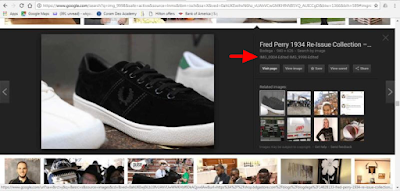SEO is broad, a single person cannot perform all the SEO tasks that are needed to be done. Most probably you might have already encountered a person claiming as an all in one expert though. Trust me, he is either a rookie or does not know about SEO at all.
If you even casually divide the work done in a typical SEO, it splits into four different areas and each area can be mastered only if someone works delicately in it. Over the past few years of my experience as a developer and working with the website SEO, I have identified that there are typically four types of SEO specialists. It’s not a formal classification, but my views, you are free to disagree with me.
In this article, I have tried to explain four major SEO tasks and how they are headed by respective experts. So, let just dive in.
1. The data Analysts
Data analysis is certainly the most crucial part of the website SEO in every sphere. Whether it's an eCommerce store or a blogging site, understanding of large sets of data and the ways to parse them into useful information is an art, and it requires an analytical mindset.
An SEO specialist with the proficiency in the data sciences, statistics, can work best as an Analytics SEO. Such SEO practitioners have significant experience with data interpretation and can transform a raw data into useful SEO insights.
For example, it's not that easy to understand most of the data that is shown to you by the Google Analytics. It requires a great mindset to read those data and utilize them to make an interpretation that would guide the teams to make the further strategies for the SEO improvement.
So, I think it requires the skill sets of both the SEO and analyst to own a task of correlating data, building dashboards, and making audit reports that can be trusted by all.
2. The Technical SEO
Technical SEO may come from the development and design backgrounds. These professionals are either former web developers, Web designers, or software engineers. The motive for getting into the SEO task is simply to ensure that SEO is intact right from the development phase of a website. Moreover, due to their technical background, web development experience, and now working for SEO, they can be a useful asset for your website SEO as well as optimization.
You would hardly find a developer considering the minute SEO aspects in the development phase. With a technical SEO in the team, the same can be made sure, and further more, other aspects like W3C compliance, JavaScript Usage, Image compression, CDN implementation can be well monitored by him.
You can also expect these SEO professionals to work on On-page SEO, UX, and UI optimization as well. For example, a technical SEO would know the best practices to design the Web forms for optimized UI and UX.
You might want to give more than just the admin panel access to a technical SEO to thrive and enact the code changes as well.
3. The content SEO
The content SEOs are well aware of the on the page SEO techniques and their constant focus lay on almost all the aspects that determine the improvement in the search ranking organically and inorganically. From on-page content optimization, keywords research, back-links earning, to Guest blogging, a content SEO can handle every aspect that comes on the page.
It is mostly due to the previous careers as writers, branding experts, corporate communications, PR, and Social media management, content SEO have a better understanding of how things can be written so that the search engines can rank them well in the SERPs.
They play an effective part in the content marketing strategy preparation and implementation. They are also well equipped with the analytics skills to discover the content performance issues and prepare a road map to fix them.
The major aim of the content SEO specialist is always finding the new ways to route website traffic to their sites and earn new backlinks in collaboration with the content developers. This field is not limited as the soul of the on page SEO lies in the content optimization for improved ranking.
4. All rounders or Novice
These are the learners class of SEO professionals who often rely on SEO plugins and tools. With lesser experience and willingness to learn new things they are not meant to be discouraged or ignored. I have come across various rookies who with their simple approaches and with the help of popular tools, have succeeded many times.
Most often these SEO plugins and tools claim to provide an all in one SEO for the less experienced practitioners. And due to the extreme success of some of these tools, they might come to you with one-size fits all approach. Eventually, the learners do become the experts as the time passes and they find that there is nothing like one tool can fix all issues.
So, if you ever encounter any such SEO- be encouraging with them! In fact, if your SEO budget allows you to hire just a single person to run the SEO marketing, this novice class of SEO practitioners would work the hardest and cover most of the things.
Everyone starts as a novice, every SEO learns through the wining history and SEO mistakes as well. Eventually, the learning curve increases and with the experience the novice becomes an expert. So never under estimate them. They are enthusiastic and always ready to fly higher without fear.





